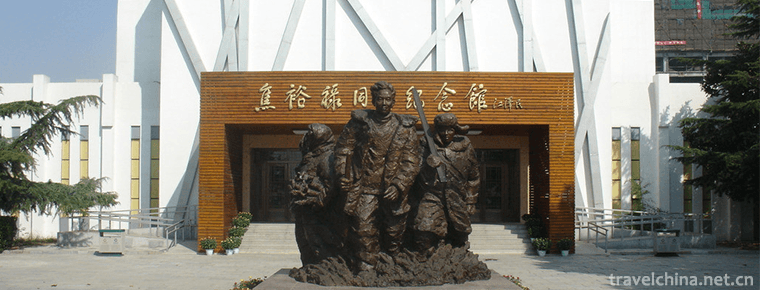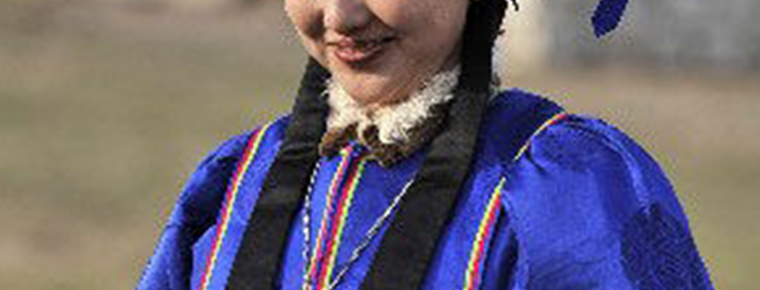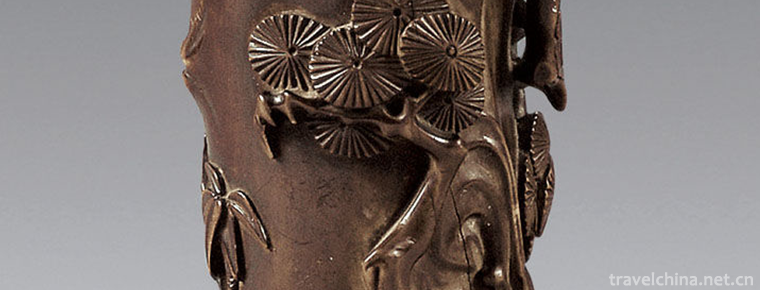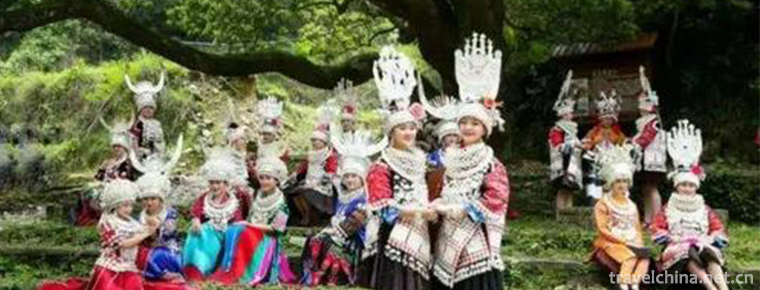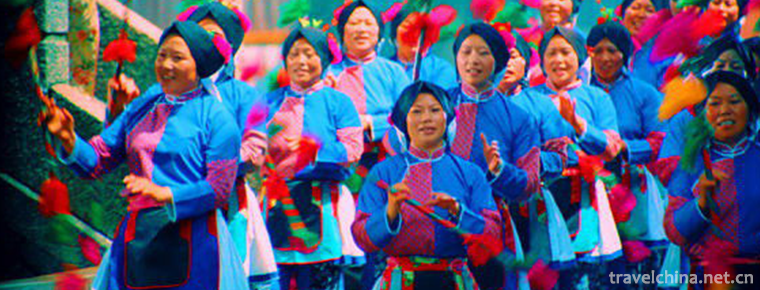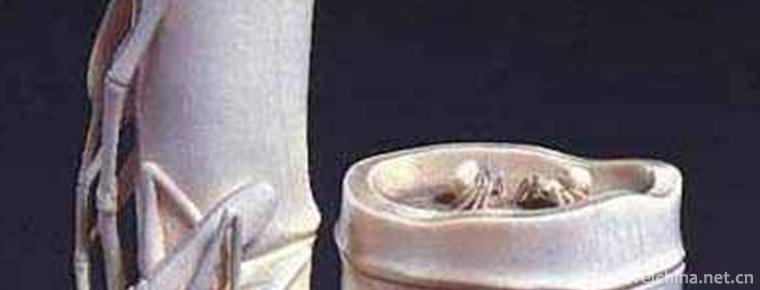Jiaozuo Film and Television City
Jiaozuo Film and Television City
Jiaozuo Film and Television City, located in Jiaozuo City, Henan Province, is a large-scale comprehensive tourist area with film and television shooting services as the main function, including sightseeing, cultural entertainment, leisure and vacation. With its rich cultural background and unique historical scenes, Jiaozuo Film and Television City has been rated as a national AAAA-level tourist attraction. In 1995, the Jiaozuo Municipal People's Government invested 230 million yuan to build it.
The main scenic spots of Jiaozuo Film and Television City are composed of Chengmen Square District, Zhou Wang Gong District, Lingtai, Shijing District, Chu Wang Gong District, Generation Tianjiao District, Outside Scenic Spot and many other film and television shooting landscapes. The building area of 400,000 square meters is an archaized building complex with the culture of the Spring and Autumn Period and the Warring States Period, Qin and Han Dynasties and the Three Kingdoms Period as its background.
Jiaozuo Film and Television City has been awarded the "National Designated Film and Television Base", becoming one of the nine qualified excellent film and television shooting sites in the whole country.
In Jiaozuo Film and Television City, there are TV series "Laozi Legend", "Water Margin", "Three Kingdoms", "Warring States", "Chaotic Palace: Red Hair Beauty" and other works .
Evolution of construction
In 1995, Jiaozuo Film and Television City was built by CCTV and Jiaozuo Municipal People's Government with an investment of 230 million yuan because of the location of the TV play "Eastern Zhou Dynasty". Founded that year, it attracted 25 TV stations and groups to Jiaozuo Film and Television City to discuss shooting matters.
In 1999, Jiaozuo Film and Television City invested another 30 million yuan in the second phase of construction.
On December 24, 2002, the administration of Jiaozuo Film and Television City was delegated from Jiaozuo Tourism Bureau to Jiaozuo Liberated Area Government, where Jiaozuo Film and Television City is located. At the end of 2002, Jiaozuo Film and Television City was renamed "Jiaozuo Yellow River Culture Film and Television City" .
On September 29, 2004, Jiaozuo Film and Television City Property Rights Auction was held, and Jiaozuo Three-dimensional Group successfully bid. The management of Jiaozuo Film and Television City still belongs to the government of the Liberated Areas.
In 2005, the number of mass actors in the Legend of Struggling for Hegemony was 213,000, and they consumed more than 8 million yuan in Jiaozuo.
On February 18, 2011, Jiaozuo Film and Television City officially joined Jiaozuo Three-dimensional Group .
Architectural pattern
Jiaozuo Film and Television City is located at the northern end of Jiaozuo City, Henan Province. It covers an area of 3 square kilometers and has a construction area of 400,000 square meters. Jiaozuo Film and Television City is an archaized building complex with the culture of Spring and Autumn Period, Warring States Period, Qin and Han Dynasty and Three Kingdoms Period as its background. It consists of cultural square area, Zhou Wang Gong area, Shijing area, Chu Wang Gong area and ancient battlefield area. The Chengmen Square area is represented by bronze-cast square tripod, relief sculptures of the Eastern Western Zhou Dynasty and the unification of Daqin Dynasty, bronze warriors, ancient coin-shaped gates, statues of three emperors, six philosophers and four gods and beasts. The Zhouwang Palace area includes Zhouwang Palace, photographic studio and Lingtai. The building area of the studio is 8000 square meters. Lingtai is at the top of the film and television city. The Chu Palace embodies the Chu culture in the Yangtze River Basin. Shijing District reflects the scene of production and life of the common people in the Spring and Autumn Period and the Warring States Period. Jiaozuo Film and Television City and Jiaozuo Landscape complement each other. Jiaozuo Film and Television City and Yuntai Mountain Scenic Area tourism have replaced the development of Jiaozuo coal resources, realized the social and economic transformation, and achieved a successful "Jiaozuo Phenomenon" .
Main attractions
Chengmen Square District
Chengmen Square, located at the southern end of Jiaozuo Film and Television City, is the main part of the second phase of Jiaozuo Film and Television City, including the three emperors'statues.
Six philosophers, four gods and beasts, Simuwu big square tripod, antique stage, ancient coin gate, large relief sculptures and buildings. The three emperors are Huangdi, Yandi and Fuxi respectively. Six philosophers are Confucius, Mencius, Laozi, Sun Tzu, Zhang Heng and Han Fei. The four gods are Suzaku, Baihu, Qinglong and Xuanwu.
Ancient stage is the main place for film and Television Cultural activities. Every year, there are rich and colorful large-scale literary and artistic performances in Golden Week, Spring Festival and major festivals. Jiaozuo Landscape Image Envoy Final Competition and other large-scale cultural activities were held. In July 2000, famous cross talk actors Feng Gong and Li Jindou performed here. The copper-cast big square tripod on the stage was cast according to the Yin Shang Si Muwu big square tripod. The large reliefs on both sides of the Outer Square are "moving eastward from the Western Zhou Dynasty" and "unification of the Great Qin Dynasty". The coin-shaped gate coincides with the shovel-shaped coin of Zhao State in the Spring and Autumn Period and the Warring States Period.
Chengmen Square District is the main venue for Jiaozuo folk cultural activities. The first, second, third and fourth Jiaozuo Landscape International Tourism Festival has been held in succession here, as well as cultural activities such as "100,000 Taiji Crossing Yuntai", "100,000 people walking vigorously throughout the country", "large-scale lantern exhibition". There are Wang Xiaoya, Zhang Zheng, Zhou Tao, Sun Nan, Yang Kun, Tengger and Sqinger Rile. Song Zuying and others appeared here. There is also a lighting performance system with an investment of 7 million yuan. There are tourist service centers offering consultation, shopping and special crowd services in the cultural square area. There are free explanations and water supply service points. There are tourist catering, recreational tables and chairs, as well as sun and rain shelters.
Zhou Wang Palace District
Zhouwanggong District, located in the central part of Jiaozuo Film and Television City, includes Sibu statue, imitation of Han Baiyu Bridge, Eye Lake, Zhouwanggong Palace and matching Palace Taixue School, Wuchang, as well as behind the studio and Lingtai. The four sides of the palace gate are unlike the academic name of Yuanyu. There are three patterns carved on the pier and platform below. They are Lion Head, Phoenix, Peony and Three Kings Lion. Three white jade bridges imitating the Han Dynasty were passed by emperors and civil and military officials respectively. The Eye Lake under the bridge is also called the Eye of Heaven.
The structure of the Zhouwanggong Palace is a pyramid roof with square pillars and cantilevered beams. The Taixue School of Dongpaidian is a place for ancient imperial children to learn. Xipeidian Wuchang corresponds to Taixue School, which is the place where the imperial children practice martial arts. It is also the place where Zhou Tianzi and Minister Wenwu watch the imperial children practice martial arts and select military generals and talents. The walls of the Zhou Palace were built in the style of beacon towers. The main hall is where Zhou Tianzi went to court and handled government affairs. The Eastern Hall is where Zhou Tianzi banqueted all civil and military officials and envoys from various countries. The Western Hall is where Zhou Tianzi went to bed.
As the empress palace of the King of Zhou, the studio is the palace inhabited by the emperor and concubine of Zhou dynasty. It has a total area of 8230 square meters and a practical area of 5830 square meters. It has supporting actors'dressing rooms, rest rooms, clothing rooms and props rooms. It is an ideal place for film and television crews to shoot. The ancient well next to it was the place where the queen sister of King Wu and a palace maid died in the Warring States Period.
At the same time, the Zhouwanggong Palace provides shopping and entertainment facilities for tourists. It operates famous Shanyang embroidery, Jiaozuo four Huaiyao medicines and Jiaozuo specialty Wuzhu oil tea, Wuliyuan pine eggs and Qixian bamboo flute and other tourism products. On the walls of the palace hang stills of famous stars in many movies and TV programs. Every day in the hall, classic film and television replays are performed for tourists.
Lingtai
Lingtai, located in the eastern side of Jiaozuo Film and Television City, is an important place for ancient emperors to worship the heavens and the festivals of princes. Every major festival, emperors come here to worship the heavens and seal Buddhism in order to bless heaven and save disaster. Legend has it that Lingtai is a ladder through heaven and a bridge between heaven and man. It is engraved with a Taiji map, which reflects the idea of "Taiji generates two instruments, ring and ring" endless changes and derivatives.
Chu palace District
Chuwanggong District, located in the northwest end of Jiaozuo Film and Television City, is a scenic building in the Yangtze River Basin. The hall is a must-use scene for every theatre group. The main hall is the caster Bureau left behind by "Laying Wages and Tasting Gallbladder". The image of Goujian Stone House is lifelike. The stone steps beneath the hall are ninety-five levels, implying the supremacy of ninety-five. Lake Biwa is the moat of the Chu Palace. The ancient locust trees beside the Chu Palace are about 500 years old. The three beasts on the bridge pillars outside the city gate face east, West and South respectively, because the north side is the throne of the king.
The daily performances in the palace of the King of Chu include Jing Ke stabbing the Qin Dynasty, Guan Wa Jing Ying, Ta Ge and Neon Dress and Feather Clothes.
Marketplace block
Shijing District, located in the central part of Jiaozuo Film and Television City, consists of Yuwangmiao and Shijing Street. The Yuwang Temple is a sacrificial temple to commemorate the hero Dayu when filming The Eastern Zhou Dynasty. The standard courtyard building is situated in the eastern and Western dynasties.
Shijingjie Street is a pre-Qin antique street, which is a building form of Shijingjie Street, thatched roof, yellow mud wall and rubble paving. The posts, taverns, workshops, pawnshops and stables used by the lodgers show the rudiments of modern cities.
The performances of the city streets include "King Qin's Travel", "City Gate Standing", "Zheng Ren Buying Tracks", "Self-contradictory", "Painting Snake and Adding Foot", etc. The third service station with free explanation, free water supply and free consultation is also set up, which is the most concentrated place for shopping.
A generation of Tianjiao District
Tianjiao District, located in the northeast end of Jiaozuo Film and Television City, is mainly composed of Tianjiao District, Shouyang Mountain Hut and Laying Salary and Tasting Gallbladder. The TV series "Laying Wages and Tasting Gallbladder", "New Three Kingdoms", "Secret History of Xishi", "Chu Han Zhengxiong" were filmed here.
Holy Buddhist temple
Holy Buddhist temple,
Located at the northern end of Jiaozuo Film and Television City, it was built in the third year of Tang Zhenyuan (787), covering an area of 10,000 square meters. A plaque of "Saint Buddha Temple" hangs on the gate of the temple. The Eastern Hall is the Guanyin Hall, the Western Hall is the Linking Hall, and the gables are made of stone. Daxiong Palace, 20 meters wide and 17 meters high, covers an area of 600 square meters. It was completed on December 31, 2002. Looking from the outside, Daxiong Palace is a two-storey building model, in fact, it is a one-storey building.
Jiaozuo Peripheral Scenic Area
The main scenic spots around Jiaozuo are Zhongyuan Film and Television City, Qurenli Vortex Culture Film and Television City, Yellow River Rich Scenic Ecological World, Jiaozuo Forest Zoo Park, Jiaozuo Seam Mountain National Mine Park, Danhe Canyon, Yuntai Mountain Scenic Area, Jingying Temple, Hongmen Temple, Fangzhuang Training Field, Longxiang Mountain and Xiaoshangshihe, which are all joint scenic spots for Jiaozuo Film and Television City to take scenery .
Honors
In 2006, Jiaozuo Film and Television City was elected as China's top ten film and television bases .
In 2009, Jiaozuo Film and Television City became the designated film and television shooting base in China .
In 2012, Jiaozuo Film and Television City successfully created a national AAAA-level tourist attraction .
In 2013, Jiaozuo Film and Television City was awarded the "Top 10 Tourist Scenic Spots Favorite by Netizens" .
In 2014, Jiaozuo Film and Television City was designated as a pilot unit of Provincial Tourism Standardization .
Cultural Activity
On September 5, 2014, Jiaozuo Film and Television City's Autumn 2014 National Fitness Passion Provincial Sports Cultural Festival opened .
On December 4, 2015, Jiaozuo Film and Television City held the Fire Fighting Competitive Games .
On July 21, 2016, in Jiaozuo Film and Television City, a CCTV Children's Opera Gala in Liyuan was held in Henan Province.
During the Spring Festival of 2017, Jiaozuo Film and Television City held a cultural temple fair of "Year's Flavor". On February 17, 18 and 19, the 2017 Chinese Model Net Reds Competition, the first International Network Star Festival of China Henan Station, was held in Jiaozuo Film and Television City.
From July 1 to August 31, 2018, Jiaozuo Film and Television City held the activity of "Playing in Summer, Cool Summer".
Tourism information
Admission ticket
Adult tickets for Jiaozuo Film and Television City are 40 yuan. Children under 1.4 meters in height and the elderly over 70 years old are exempted from admission tickets and students'vouchers are half-ticket. The tour guide costs 50 yuan.
Opening Hours
Jiaozuo Film and Television City 8:00-17:30 (winter); 8:00-18:30 (summer).
Traffic information
From Zhengzhou to Jiaozuo in Henan Province (80 km apart), Luoyang (120 km apart), Jincheng in Shanxi Province (80 km apart), Xi'an in Shaanxi Province, Wuhan in Hubei Province and Jinan in Shandong Province, Jiaozuo Film and Television City can reach Jiaozuo in all directions. Jiaozuo Film and Television City is one kilometer apart from the urban area, with bus and taxi arriving directly.
aviation
Foreign tourists can fly to Zhengzhou Xinzheng International Airport and Luoyang, then transfer to Jiaozuo by car, or go directly to Jiaozuo by train.
Train
From Beijing, Jinan (along Tai'an and Heze), Taiyuan, Lianyungang, Xuzhou, Chongqing and Nanyang, there are direct trains to Jiaozuo. Foreign tourists can also take trains to Zhengzhou, Luoyang, Kaifeng and Xinxiang, and then transfer to Jiaozuo by car. Zhengzhou has opened an inter-city train to Jiaozuo, which can reach Jiaozuo city directly for only 28 yuan.
Self driving
Jiaozuo is located in the Central Plains, with convenient transportation and good traffic conditions. Tourists who like self-driving can drive to Jiaozuo Film and Television City by themselves.
Drive 7-9 hours from Beijing to the movie city. From Beijing to Jiaozuo Film and Television City, you can refer to the following route:
Beijing-Shijiazhuang Expressway on Liuliqiao, Hebei Toll Station charges 15 yuan.
Shijiazhuang South Toll Station pays 60 yuan Shangshi (Shijiazhuang) - An (Anyang) Expressway.
Linzhang toll station pay 60 yuan, Shangan (Anyang) - Xinxiang Expressway.
From New Country Expressway to Jiaozuo.
From Zhengzhou, cross the Yellow River Bridge along National Highway 107, Shangzheng Jiaojin Highway, Jiaozuo South-Down Highway
automobile
Shanxi Jincheng, Zhengzhou, Xinxiang, Kaifeng and Anyang all have expressways to Jiaozuo.
Zhengzhou Long-distance Passenger Transport Center Station (opposite to the railway station), Erma Road Bus Station, Nanyang Road Bus Station, North Long-distance Bus Station and Zhengzhou East Bus Station all have passenger cars directly arriving at Jiaozuo. The driving time is about 1.5-2 hours. The fare is 25-35 yuan and Jiaozuo-Zhengzhou Intercity Bus is opened. Jiaozuo can be reached by 17 yuan from Zhengzhou New North Station.
Heze, Shandong Province, Xuzhou, Jiangsu Province can take a long-distance bus in Zhengzhou or Xinxiang, take a bus to Jiaozuo, Zhengzhou section is a high-speed, Xinxiang section is a second-class highway, the road condition is very good.
Provincial Public Transport
Jincheng Stu Town-Jincheng East Bus Station-Jiaozuo Film and Television City
Daily 6:30-21:00, an average of half an hour, cycle departure, one-way running time: one and a half hours.
On weekends and holidays, the inter-provincial bus from Jincheng to Jiaozuo is free. The fare for working days is 10 yuan per person .
Jiaozuo City Traffic
Jiaozuo Long-distance Bus Station (Tanan Road) can take a taxi directly to Jiaozuo Film and Television City, long-distance bus station can take bus No. 13 to arrive directly, and train station No. 36 to arrive directly. Taiyuan, Zhengzhou, Luoyang, Beijing, Xi'an, Heze and Xuzhou can use the film and Television City as a tourist attraction.




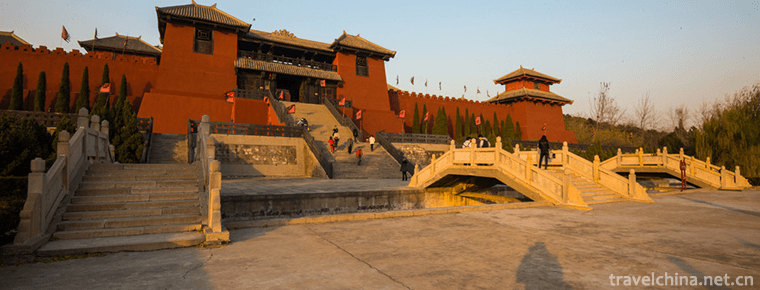
-
Jiao Yulu Memorial Park
Jiao Yulu Memorial Park (formerly Jiao Yulu Martyrs Cemetery) was built in February 1966. It is located on the old embankment of the Yellow River in the north of Lankao County, Kaifeng City.
Views: 152 Time 2019-01-22 -
Treasure roll
Baojuan is a traditional Chinese literary form of rap and singing, which evolved from the folklore in the temples of Tang Dynasty. Most of the authors are monks and nuns..
Views: 499 Time 2019-04-04 -
Ewenki costumes
The Ewenki people belong to the Tungusic race, and their clothing materials are mainly animal skins, as do the Tungusic people such as Manchuria and Xibo..
Views: 265 Time 2019-04-28 -
Yueqing Poplar Wood Carving
Yueqing boxwood carving, a kind of ornamental round carving art with boxwood as its material, is mainly popular in Houhengcun, Wengyuan Street and Lecheng Street of Liushi Town in Yueqing City,.
Views: 103 Time 2019-05-11 -
Miaos Rock planting Custom
Traditionally, the Miao people have a kind of public deliberation and legislative activities called "burying rock" (also known as "planting rock". When burying rock, they bury a re.
Views: 192 Time 2019-06-05 -
Womens clothing in Yongzhishui Townshi Suzhou
The women's clothing in Yongzhishui Township, Suzhou, is an outstanding representative of the Han nationality's clothing. It is a typical and representative clothing of the working people in Wu area. .
Views: 271 Time 2019-06-17 -
ivory carving
Ivory carving refers to the carving process and its products with ivory as the material. It is an ancient Chinese traditional art, folk arts and crafts. Ivory is the strongest part of an elephant. It .
Views: 110 Time 2019-07-06 -
Chinese Cheongsam QiPao start time
When it comes to the beginning of cheongsam fashion, it is generally believed that in the period of the Republic of China in the 20th century, Mr. Zheng Yimei said that "the original women wore short clothes in the Qing Dynasty, but did not wear .
Views: 363 Time 2020-12-11 -
Cheongsam production technology
Most of the classical flag dresses have straight lines. The body is loose and the two sides are split. The bust and waist circumference are close to the size of the dress. The appearance of cheongsam is generally required to have all or part of the following characteristics:.
Views: 144 Time 2020-12-11 -
Guangyuan climate
Guangyuan City belongs to subtropical humid monsoon climate; it is located in the southern foot of Qinling Mountains, which is a transition zone between North and south. It has the characteristics of humid climate in the South and the characteristics of high sky.
Views: 328 Time 2020-12-15 -
Nanchong landform
Nanchong terrain inclines from north to south, with an altitude of 256-888.8 meters. The main geomorphic types are hills, and 1 / 3 of them are high hills and low mountains, middle hills and valleys, and low hills and dams. The geomorphic types of the whole city.
Views: 321 Time 2020-12-17 -
Mineral resources in Guangan
Guang'an City is located in the middle part of Huaying Mountain. The mineral resources are mainly distributed in Huayingshan, Tongluoshan and Mingyueshan anticlines, and two synclines of Dongcao and Xicao in Linshui county. More than 30 kinds of mineral depo.
Views: 287 Time 2020-12-19
